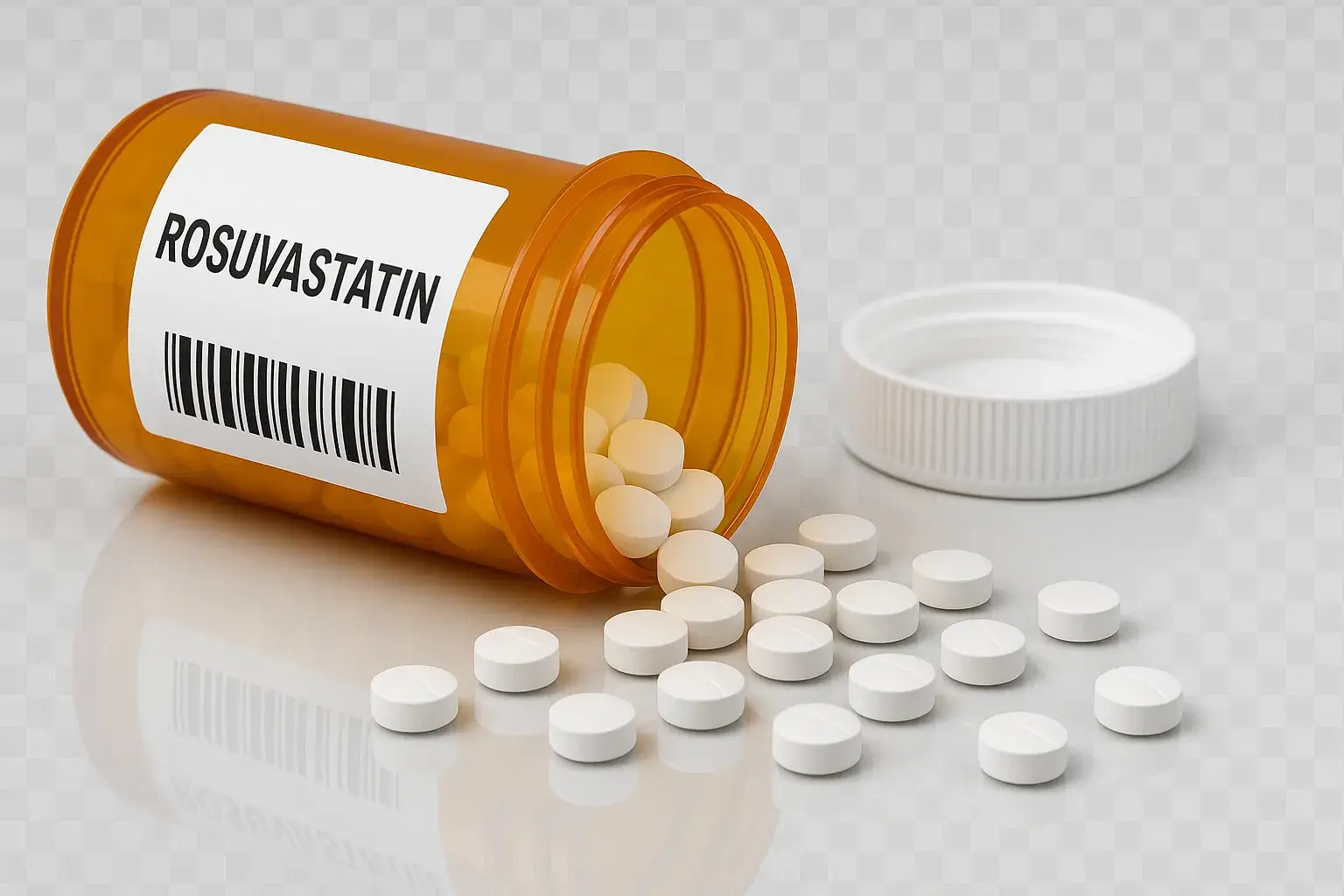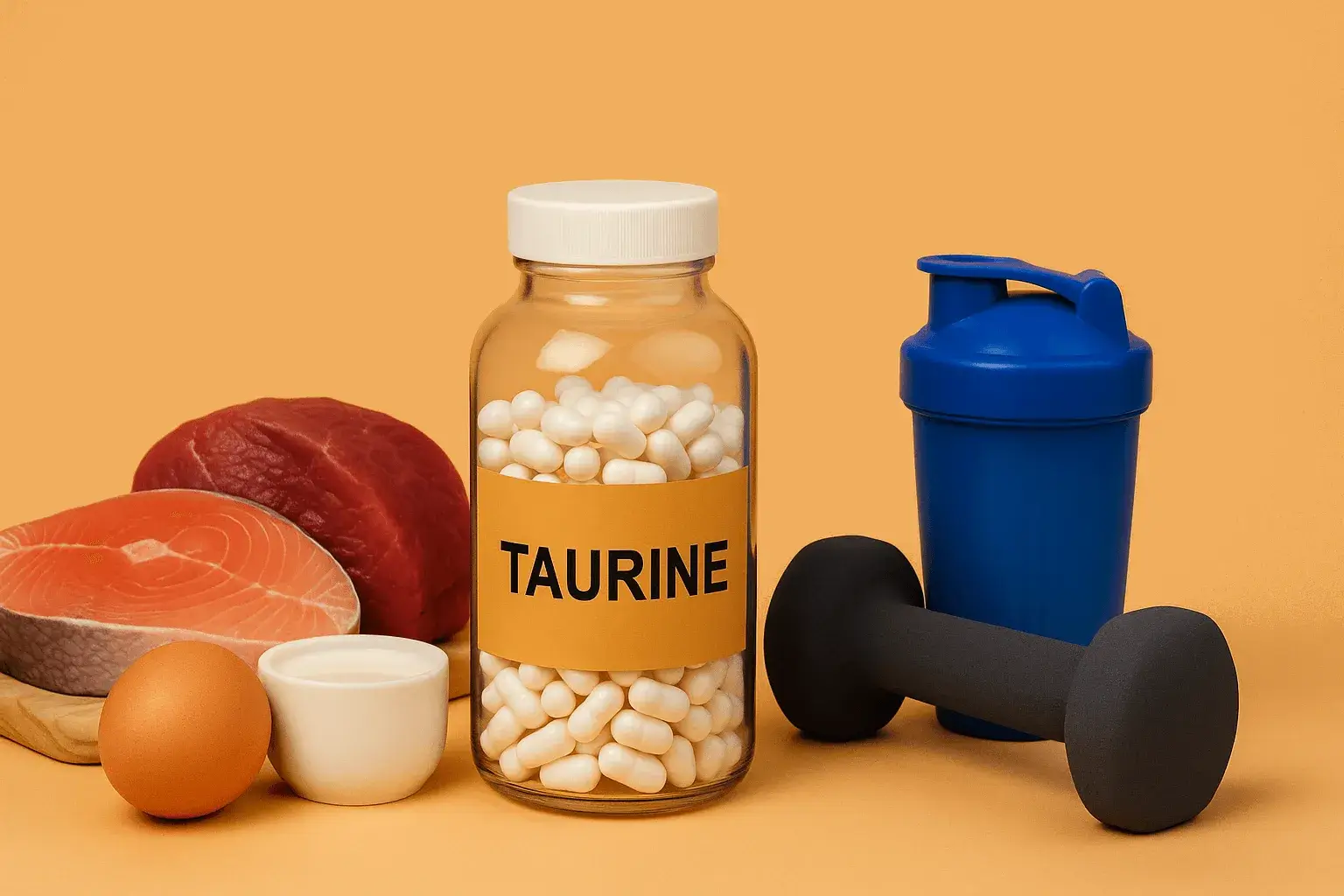
Rosuvastatin & Your Heart: A Young Adult's Guide
- Marcus Reed
- Health , Cardiology , Medicine
- May 25, 2025
Table of Contents
Fast Facts: Rosuvastatin for Young Adults (TL;DR)
- Powerful Cholesterol Lowering: Rosuvastatin effectively reduces LDL-C (‘bad’ cholesterol), often more significantly than other statins at comparable doses [2], [5].
- Cardiovascular Protection: It helps cut cardiovascular risk by lowering LDL-C and reducing systemic inflammation, a key driver in heart disease [1].
- Safety Profile: Long-term use in young adults generally has a favorable safety profile. Rare but serious risks like myopathy (muscle issues) [11] and new-onset diabetes [12] exist, particularly at higher doses or with predisposing factors.
- Early Intervention: There’s a growing emphasis on managing high LDL-C levels earlier in life (e.g., in the 30s) to prevent long-term atherosclerotic buildup [8].
- Personalized Approach Essential: The decision to take Rosuvastatin, especially for primary prevention in younger adults, requires a thorough discussion with a healthcare provider, considering individual risk factors and health goals.
Rosuvastatin for Young Adults: A Shield for Future Heart Health?
Cardiovascular disease (CVD) often seems like a concern for older age, but the foundations for heart health—or disease—are laid much earlier in life. For young adults, particularly those in their 30s, understanding and managing risk factors like high cholesterol is becoming increasingly crucial. One medication frequently discussed is Rosuvastatin. This article delves into the science behind Rosuvastatin, its comparative effectiveness, benefits, potential risks, and its role in promoting heart health and longevity, especially for a younger demographic focused on proactive, evidence-based wellness.
The Core Issue: LDL Cholesterol and Early Atherosclerosis
Low-density lipoprotein cholesterol (LDL-C), often dubbed “bad” cholesterol, is a primary driver of atherosclerosis—the gradual buildup of plaque in your arteries [6]. This process can start silently in youth and progress for decades. Studies like the PESA (Progression of Early Subclinical Atherosclerosis) have strikingly shown that even in young to middle-aged adults with otherwise ideal health metrics, higher LDL-C levels correlate with more arterial blockages [7]. This underscores the argument for addressing elevated LDL-C earlier rather than later [8].
Comparative Efficacy of Statins in LDL-C Reduction
When it comes to lowering LDL-C, statins are a cornerstone of therapy. Among them, Rosuvastatin has demonstrated potent efficacy.
Clinical trials like ECLIPSE and STELLAR highlight Rosuvastatin’s robust performance. For instance, in the ECLIPSE trial, a 10 mg daily dose of Rosuvastatin helped 53% of patients reach an LDL-C goal of <100 mg/dL after six weeks, compared to 28% of those on the same dose of atorvastatin [4]. This superiority often persists across various doses and treatment durations.
The STELLAR trial further cemented Rosuvastatin’s strong LDL-C lowering capacity. At a 10 mg dose, Rosuvastatin reduced LDL-C levels by approximately 46%, significantly outperforming atorvastatin (37%), simvastatin (28%), and pravastatin (20%) [2], [3]. This enhanced efficacy is partly due to Rosuvastatin’s high affinity for HMG-CoA reductase, the target enzyme in cholesterol production, and its hydrophilic nature, which may minimize effects outside the liver [3].
Achieving aggressive LDL-C targets is vital, especially as guidelines evolve. The ECLIPSE trial showed Rosuvastatin’s advantage in reaching stricter goals like <70 mg/dL; 8% on 10mg Rosuvastatin achieved this versus 2% on atorvastatin, with this gap widening over time [4]. The VOYAGER meta-analysis, encompassing over 32,000 patients, consistently showed Rosuvastatin providing greater LDL-C reductions (ranging from -39% at 5mg to -55% at 40mg) compared to equivalent doses of atorvastatin and simvastatin [5].
Rosuvastatin’s Dual Role: Lipid Management and Systemic Inflammation Mitigation
Inflammation is a key player in cardiovascular disease. Markers like C-reactive protein (CRP) are independent predictors of vascular events, even with normal lipid profiles. Addressing inflammation alongside cholesterol is therefore a critical strategy.
The JUPITER trial was a landmark study demonstrating Rosuvastatin’s ability to tackle both. In 17,802 healthy individuals with elevated high-sensitivity CRP (hsCRP) but normal LDL-C, Rosuvastatin 20 mg daily led to a 44% reduction in major cardiovascular events [1]. Participants saw significant drops in both LDL-C (50%) and hsCRP (37%). Achieving combined targets of LDL-C <1.8 mmol/L (approx. 70 mg/dL) and hsCRP <2 mg/L amplified benefits, reducing vascular event rates by 65%, underscoring the power of hitting both lipid and inflammatory pathways [1].
Rosuvastatin’s anti-inflammatory properties, by modulating pro-inflammatory signals and lowering hsCRP, contribute significantly to its therapeutic value beyond cholesterol reduction [3]. This dual action makes Rosuvastatin a potent option for individuals with a heightened inflammatory burden.
Rosuvastatin in Cardiovascular Risk Reduction: Evidence from Trials
Rosuvastatin’s impact on reducing major cardiovascular events is well-documented.
In the JUPITER trial, individuals on Rosuvastatin 20 mg daily (with elevated hsCRP but no prior CVD) saw a 54% reduction in myocardial infarction (MI), a 48% reduction in stroke, and a 47% reduction in arterial revascularization compared to placebo over a median of 1.9 years [1]. This rapid benefit in an asymptomatic population highlights its preventive potential.
The METEOR trial examined Rosuvastatin’s effect on carotid intima-media thickness (CIMT), a marker of subclinical atherosclerosis. Rosuvastatin 40 mg daily significantly slowed CIMT progression in patients with early atherosclerosis compared to placebo, suggesting it can modify the early course of arterial disease.
Beyond LDL-C, Rosuvastatin can also favorably impact high-density lipoprotein cholesterol (HDL-C, or “good” cholesterol). In ECLIPSE, Rosuvastatin 10 mg increased HDL-C by 7.7% at week 6, versus 5.3% for atorvastatin 10 mg [4].
Mechanism of Action and Pharmacokinetic Profile of Rosuvastatin
Rosuvastatin works by inhibiting HMG-CoA reductase, the key enzyme in the liver’s cholesterol production pathway [3]. Its high binding affinity for this enzyme contributes to its potent and sustained cholesterol-lowering effect [15]. A methane sulfonamide group enhances its water-solubility (hydrophilicity) and enzyme binding [3].
Key pharmacokinetic advantages include:
- Hepatoselectivity: Its hydrophilic nature limits penetration into non-liver tissues, potentially reducing side effects like muscle toxicity [3], [15].
- Minimal Cytochrome P450 Metabolism: Unlike atorvastatin and simvastatin (mainly metabolized by CYP3A4), Rosuvastatin undergoes limited metabolism by these enzymes. This means fewer potential drug-drug interactions, a plus for those on multiple medications [3], [15].
- Long Half-Life: An elimination half-life of about 19 hours supports once-daily dosing and consistent lipid lowering [15].
Genetic variations in drug transporters (like BCRP and OATP1B1) can influence individual responses and exposure to Rosuvastatin, sometimes necessitating dose adjustments. This highlights an area for personalized medicine advancements [3].
Safety Profile of Long-Term Rosuvastatin Use in Healthy Adults Aged 30-39
 For young adults considering long-term daily Rosuvastatin, understanding the safety profile is paramount. Generally, it’s well-tolerated, but vigilance for rare adverse effects is needed.
For young adults considering long-term daily Rosuvastatin, understanding the safety profile is paramount. Generally, it’s well-tolerated, but vigilance for rare adverse effects is needed.
- Muscle-Related Issues: Myalgia (muscle pain) can occur. More severe myopathy or rhabdomyolysis (a serious muscle breakdown condition) is rare, with an incidence of about 0.1 per 1,000 person-years [3]. The comprehensive Lancet meta-analysis of statin trials found that statins cause a small excess of muscle pain/weakness, mostly within the first year, and that serious muscle events are uncommon [11]. Lower doses, often appropriate for younger adults, typically have lower risk.
- New-Onset Diabetes: Statin therapy, including Rosuvastatin, has been linked to a slightly increased risk of developing type 2 diabetes, particularly in individuals with pre-existing risk factors (e.g., higher baseline glucose, obesity) [12]. The JUPITER trial noted a small absolute increase in physician-reported diabetes (2.8% vs. 2.3% with placebo) [[1]](#references]. While the cardiovascular benefits generally outweigh this risk, regular glucose monitoring is wise for those predisposed [12].
The pharmacokinetic properties of Rosuvastatin contribute to its overall favorable safety profile compared to more lipophilic statins [3], [15]. However, co-administration with certain drugs (e.g., some protease inhibitors, cyclosporine) can increase Rosuvastatin levels and risk, requiring caution [3].
Cardioprotective Benefits Beyond LDL: Endothelial Health and Inflammation
Rosuvastatin’s benefits extend beyond just numbers on a lipid panel. It positively influences arterial health markers and vascular biology.
- Improved Endothelial Function: The endothelium is the inner lining of blood vessels. Its dysfunction is an early step in atherosclerosis. Rosuvastatin can enhance endothelial nitric oxide synthase (eNOS) activity, promoting nitric oxide production (which helps vessels relax) and improving vascular health.
- Reduced Oxidative Stress: It can also decrease oxidative stress within the vascular wall, further protecting endothelial integrity.
These “pleiotropic” effects underscore that Rosuvastatin’s cardioprotection is multifaceted. For healthy adults aged 30-39, initiating Rosuvastatin (if clinically indicated after discussion with a doctor) could offer long-term benefits by addressing subclinical vascular damage early. However, responses vary, partly due to genetics [3].
While trials like JUPITER have shown significant reductions in cardiovascular events [1], the long-term impact on all-cause mortality in younger, healthier primary prevention cohorts continues to be studied. The absolute benefits must always be weighed against potential long-term risks for this demographic.
Rosuvastatin Data: A Snapshot
The following tables summarize key findings related to Rosuvastatin’s efficacy and considerations:
Comparative LDL-C Reduction Efficacy
| Statin | Dose (mg) | LDL-C Reduction (%) | Patients Achieving NCEP ATP III Goals (%) | Additional Notes |
|---|---|---|---|---|
| Rosuvastatin | 10 | 46 | 53 (ECLIPSE: <100mg/dL goal) [4] | Superior efficacy across many doses [2], [5] |
| Atorvastatin | 10 | 37 | 28 (ECLIPSE: <100mg/dL goal) [4] | Moderate efficacy |
| Simvastatin | 10 | 28 | Not specified in ECLIPSE for direct comparison | Generally less potent per mg than rosuvastatin [2] |
| Rosuvastatin | 20 | ~50 [1] | 82-89 (various studies) | Consistently outperforms other statins |
| Atorvastatin | 20 | ~43 | 69-85 (various studies) | Effective, but often less LDL-C reduction than rosuvastatin [5] |
Data derived from studies like STELLAR [2], ECLIPSE [4], and VOYAGER meta-analysis [5].
Cardiovascular Event Reduction & Anti-Inflammatory Effects (JUPITER Trial Highlights [1])
| Outcome | Relative Risk Reduction (%) | Notes |
|---|---|---|
| Major cardiovascular events | 44 | Achieved with LDL-C <1.8 mmol/L (70mg/dL) and hsCRP <2 mg/L had 65% reduction |
| Myocardial infarction | 54 | Significant benefit in primary prevention |
| Stroke | 48 | Effective even in individuals with normal LDL-C but elevated hsCRP |
Key Risks Associated with Daily Rosuvastatin Use
| Adverse Effect | Incidence Rate or Risk Increase | Contributing Factors | Mitigation Strategies |
|---|---|---|---|
| New-onset diabetes | Small increased risk (e.g. JUPITER: 2.8% vs 2.3% placebo) [1], [12] | Baseline diabetes risk factors (obesity, prediabetes) | Monitor blood glucose; lifestyle management |
| Muscle-related issues (myalgia/myopathy) | Myalgia common, severe myopathy rare (<0.1% for rhabdo) [3], [11] | Genetic polymorphisms, drug interactions, high dose | Appropriate dosing, avoid interacting drugs, monitor CK if symptomatic |
| Liver enzyme elevations | Generally low and comparable to placebo in many trials | Preexisting liver conditions | Baseline and periodic monitoring if indicated |
Insights supported by JUPITER [1], CTT meta-analyses [11], [12], and pharmacokinetic reviews [3], [15].
Cost-Effectiveness and Longevity Implications for Younger Adults
A study published in PLOS Medicine indicated that initiating statin therapy in younger adults (e.g., starting at age 40, but with implications for those in their 30s with high risk) with severe dyslipidemia can be cost-effective for primary prevention of atherosclerotic cardiovascular disease [14]. For men with LDL-C >130 mg/dL, it was found to be highly cost-effective. While benefits for women were also noted, it appeared less cost-effective due to their typically lower baseline cardiovascular risk [14]. These analyses suggest potential long-term health and economic benefits when Rosuvastatin is initiated appropriately in younger, at-risk populations, always guided by individualized assessment.
Author’s Personal Experience with Rosuvastatin
I take 5 mg of Rosuvastatin daily, a decision I made with my doctor over a year ago. This is a low dose, considering the typical maximum is 40 mg. My choice doesn’t mean it’s right for you.
Why Rosuvastatin for Me? The LDL Factor. An overwhelming body of evidence, including meta-analyses covering over 2 million participants, conclusively shows that elevated LDL cholesterol is a causal factor in the development of heart disease [6]. It’s not the only cause, but it’s a significant one.
The PESA study was particularly compelling for me. It showed that even among people with ideal metrics for other heart disease risk factors, those with higher LDL cholesterol had progressively more arterial blockages [7]. Those with low LDL had minimal to no blockages.
This evidence, and the growing call to manage LDL cholesterol more aggressively and earlier in life [8], led me to consider Rosuvastatin. My goal is to keep my LDL cholesterol under 60 mg/dL. Despite a healthy diet, regular exercise, and good sleep, I couldn’t reach this target through lifestyle alone. A low dose of Rosuvastatin helped me achieve it.
Safety and Side Effects: My Considerations Research affirms that therapies targeting LDL are generally safe [9]. Concerns about cholesterol being essential for life are valid, but studies show that lowering blood LDL levels doesn’t harm cholesterol levels in organs like the brain or contribute to cognitive issues such as dementia [10].
Conclusion: Rosuvastatin in the Modern Cardiovascular Prevention Toolkit
Rosuvastatin stands out for its potent LDL cholesterol reduction, well-documented cardiovascular risk mitigation, and beneficial anti-inflammatory effects. Clinical evidence consistently supports its ability to help patients, including potentially younger adults, achieve stringent lipid targets and reduce major adverse cardiovascular events, particularly in primary prevention scenarios. Its favorable pharmacokinetic profile often makes it a preferred option for long-term therapy [3], [15].
However, the decision to use Rosuvastatin, especially in healthy individuals in their 30s, is nuanced. Potential risks like new-onset diabetes and muscle-related side effects, though generally low, require careful consideration, individualized risk assessment, and ongoing monitoring [11], [12]. While its impact on longevity in younger, healthy populations is an area of ongoing interest, the established cardiovascular benefits are substantial when used judiciously.
Future research will likely refine personalized approaches, possibly using pharmacogenetics, and address disparities in statin access and utilization. For young adults, Rosuvastatin can be a valuable tool in a comprehensive heart health strategy, but its implementation must be guided by robust clinical judgment, shared decision-making with a healthcare provider, and a commitment to overall healthy living. The U.S. Preventive Services Task Force recommends statins for primary prevention in adults aged 40 to 75 with one or more CVD risk factors and a 10-year CVD event risk of 10% or greater, and selectively for those with a 7.5% to <10% risk [13]. For younger adults, the discussion is even more individualized.
Always consult with your healthcare provider to determine if Rosuvastatin or any statin therapy is appropriate for your specific health circumstances and goals.
Frequently Asked Questions (Q&A)
Q1: Why might Rosuvastatin be considered for heart health in your 30s?
Q2: What are the main side effects of Rosuvastatin for young adults?
Q3: Is Rosuvastatin more effective than other statins for younger individuals?
Q4: Does lowering LDL cholesterol with Rosuvastatin impact brain health or cause dementia?
Q5: How does Rosuvastatin benefit heart health beyond just lowering cholesterol?
Disclaimer
The information provided on BioBrain is intended for educational purposes only and is grounded in science, common sense, and evidence-based medicine. It is not a substitute for professional medical advice, diagnosis, or treatment. Always consult a qualified healthcare provider before making significant changes to your diet, exercise routine, or overall health plan.
References
- Ridker PM, Danielson E, Fonseca FA, et al., for the JUPITER Study Group. (2008) "Rosuvastatin to Prevent Vascular Events in Men and Women with Elevated C-Reactive Protein."
- Jones PH, Davidson MH, Stein EA, et al., for the STELLAR Study Group. (2003) "Comparison of the efficacy and safety of rosuvastatin versus atorvastatin, simvastatin, and pravastatin across doses (STELLAR Trial)."
- McTaggart F. (2008) "Rosuvastatin: a review of the pharmacology and clinical effectiveness in dyslipidemia."
- AstraZeneca. "ECLIPSE Trial: Rosuvastatin vs Atorvastatin on LDL-C Goal Achievement."
- Nicholls SJ, Brandrup-Wognsen G, Palmer M, Barter PJ. (2010) "Meta-analysis of comparative efficacy of increasing dose of Atorvastatin versus Rosuvastatin versus Simvastatin on lowering levels of atherogenic lipids (from VOYAGER)."
- Ference BA, Ginsberg HN, Graham I, et al. (2017) "Low-density lipoproteins cause atherosclerotic cardiovascular disease. 1. Evidence from genetic, epidemiologic, and clinical studies. A consensus statement from the European Atherosclerosis Society Consensus Panel."
- Fernández-Friera L, Fuster V, López-Melgar B, et al. (2021) "LDL Cholesterol and Subclinical Atherosclerosis in Young-to-Middle-Aged Adults: The PESA Study."
- CholeM GH, Eliades E, Smith S, et al. (2022) "There is urgent need to treat atherosclerotic cardiovascular disease risk earlier, more intensively, and with greater precision: A review of current practice and recommendations for improved effectiveness."
- Guedes AG, S Fase RCPW, G B L Defesche JC, et al. (2022) "Safety and efficacy of very low LDL-cholesterol intensive lowering by statins with or without ezetimibe or PCSK9 inhibitors in 85,572 patients from 21 randomized trials: A meta-analysis."
- Harris R, Goldstein L, Relkin N, et al. (2023) "Aggressive LDL-C Lowering and the Brain: Impact on Cognition and Hemorrhagic Stroke—A Scientific Statement From the American Heart Association."
- Cholesterol Treatment Trialists’ Collaboration. (2022) "Adverse events associated with statin therapy: an individual patient data meta-analysis of 23 randomised controlled trials."
- Collins R, Reith C, Emberson J, et al. (CTT Collaboration). (2016) "Interpretation of the evidence for the efficacy and safety of statin therapy."
- US Preventive Services Task Force. (2022) "Statin Use for the Primary Prevention of Cardiovascular Disease in Adults: US Preventive Services Task Force Recommendation Statement."
- Pencina KM, Navar AM, Wojdyla D, et al. (2023) "Cost-effectiveness of initiating statin therapy in younger adults with severe dyslipidemia for the primary prevention of atherosclerotic cardiovascular disease."
- White CM. (2004) "Clinical pharmacokinetics of rosuvastatin."
Tags :
- Rosuvastatin
- Heart health
- Young adults
- Cardiovascular
- Cholesterol
- Longevity
- Statins
- Health benefits
- Medication
- Preventive cardiology
- Ldl cholesterol management
- Rosuvastatin side effects young adults


